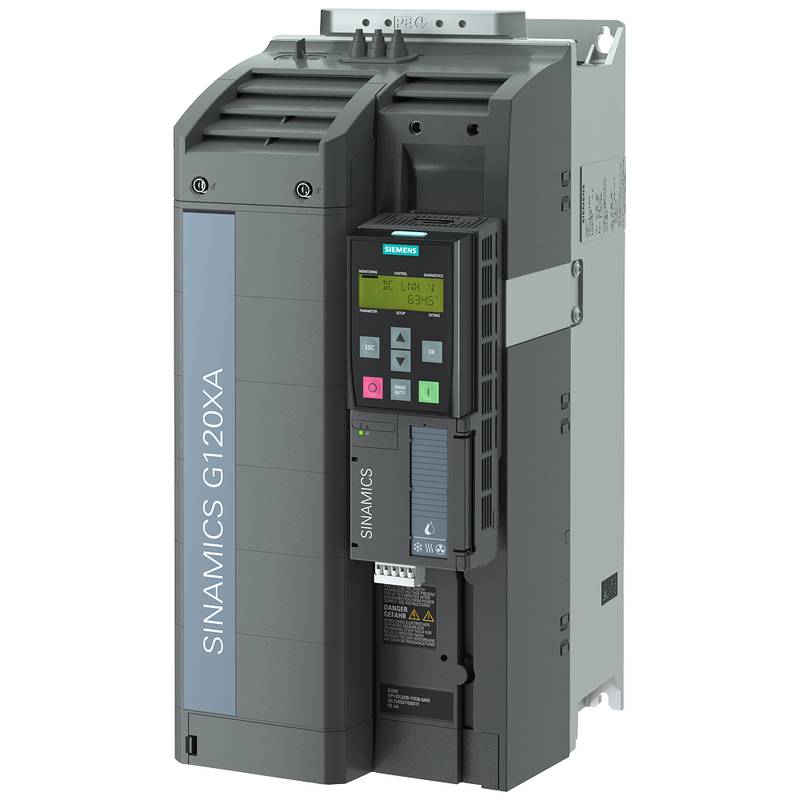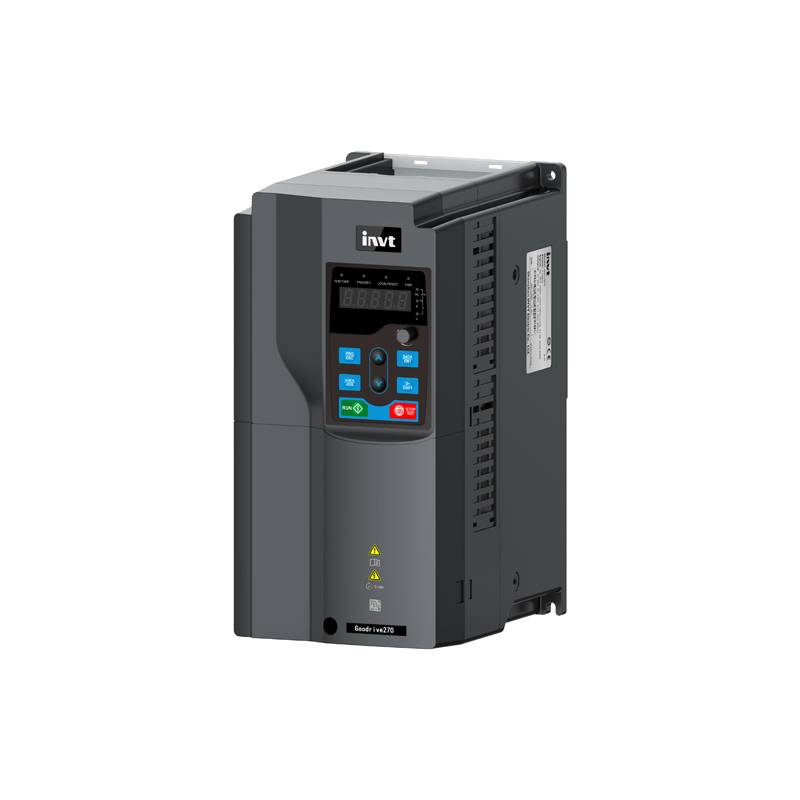
The Siemens 5SU9156-7VK06 is a high-performance Earth Leakage Protection Residual Current Circuit Breaker (RCCB) designed for reliable and sensitive protection against electrical hazards. This 1-pole + neutral device offers a rated current of 6A, a tripping sensitivity of 10mA, and a breaking capacity of 6kA, making it ideal for safeguarding circuits in various industrial and commercial applications. Its advanced electronic tripping mechanism ensures swift response to earth faults, preventing potential fires and protecting personnel from electric shock. The Siemens 5SU9156-7VK06 is engineered for robust performance, incorporating high-quality components to ensure longevity and consistent operational integrity.
Product Specifications
| Parameter | Value |
| :------------------------ | :---------------------------------- |
| Product Type | Residual Current Circuit Breaker (RCCB) |
| Model Number | 5SU9156-7VK06 |
| Rated Current (In) | 6A |
| Tripping Sensitivity (IΔn) | 10mA |
| Number of Poles | 1P+N (1 Pole + Neutral) |
| Breaking Capacity (Icn) | 6kA |
| Tripping Characteristic | C |
| Protection Type | Earth Leakage Protection |
| Technology | Electronic |
Core Features & Market Positioning
The Siemens 5SU9156-7VK06 distinguishes itself through its advanced electronic tripping technology, providing superior performance compared to traditional thermal-magnetic RCCBs. This electronic design allows for precise and rapid detection of even small leakage currents (10mA), which is critical for preventing electric shock and fires, especially in sensitive environments. Its high breaking capacity of 6kA ensures it can safely interrupt fault currents, protecting downstream equipment. Positioned as a premium solution for demanding applications, this RCCB is favored in sectors where safety and reliability are paramount, such as in control panel manufacturing, machinery protection, and building electrical installations requiring enhanced safety measures. Siemens' reputation for quality and innovation further solidifies its market standing as a dependable choice for critical electrical protection.
Key Application Scenarios
This Siemens 5SU9156-7VK06 RCCB is extensively utilized in scenarios demanding precise earth leakage detection and reliable circuit interruption. Common applications include the protection of circuits supplying sensitive electronic equipment, medical devices, and laboratory installations where even minor leakage currents can cause significant damage or pose a safety risk. It is also a vital component in control cabinets and distribution boards for industrial machinery, ensuring operational continuity and personnel safety. Furthermore, its 10mA sensitivity makes it suitable for installations requiring enhanced personal protection, such as in residential buildings with high safety standards or in areas prone to moisture. The 'C' tripping characteristic indicates its suitability for circuits with moderate inrush currents, commonly found in lighting and socket outlets.
Practical System Integration Guidance
Integrating the Siemens 5SU9156-7VK06 into existing electrical systems is straightforward, leveraging standard DIN rail mounting. Ensure that the main power supply is de-energized and locked out before commencing any work. Connect the incoming line conductors to the designated terminals (typically L and N for the power source) and the outgoing load conductors to the corresponding output terminals. The neutral conductor must be connected to its specific terminal. It is crucial to adhere to local electrical codes and standards during installation. For optimal performance and safety, use conductors of the appropriate gauge that match the 6A rating of the RCCB. Wiring diagrams and detailed installation instructions can be found in the official Siemens documentation, often accessible through platforms like SiePortal, which provides comprehensive guides and product information.
Operation and Risk Mitigation
The Siemens 5SU9156-7VK06 operates by continuously monitoring the balance of current flowing through the live and neutral conductors. If an imbalance, indicating current leakage to earth, exceeds the 10mA threshold, the electronic tripping mechanism is activated, rapidly disconnecting the circuit. A key operational feature is the manual test button, which should be periodically pressed (e.g., monthly) to verify the proper functioning of the tripping mechanism and ensure continued protection. To mitigate risks, always ensure the RCCB is correctly rated for the circuit it protects and that all connections are secure and properly insulated. In the event of nuisance tripping, carefully inspect the protected circuit for faulty appliances or wiring. Avoid working on live circuits; always de-energize and lock out the power source before inspection or maintenance.
Scalability & Long-Term Value
While the Siemens 5SU9156-7VK06 is a specific protective device, its value extends through Siemens' commitment to backward compatibility and integration within broader electrical systems. This RCCB is designed to work seamlessly with other Siemens low-voltage components, facilitating upgrades or expansions of existing installations. Its robust construction and reliable electronic components contribute to a long operational lifespan, minimizing the need for premature replacements and reducing total cost of ownership. For facilities looking towards digitalization and enhanced monitoring, Siemens offers integrated solutions that can complement the protective functions of devices like the 5SU9156-7VK06, enabling remote diagnostics and condition monitoring within smart building or industrial automation platforms.
Frequently Asked Questions (FAQs)
1. What is the primary function of the Siemens 5SU9156-7VK06 RCCB?
This device functions as an earth leakage protection residual current circuit breaker. Its main role is to detect small imbalances in current. These imbalances typically indicate current leaking to earth, which can cause electric shock or fire.
The 10mA sensitivity ensures rapid detection of such leakage. It then disconnects the circuit to prevent harm. This provides crucial personal protection.
It safeguards both individuals and electrical equipment from hazardous fault currents. It is essential for enhancing electrical safety in many installations.
2. What does the 'C' tripping characteristic signify for this RCCB?
The 'C' characteristic indicates the device's response to overcurrents. It is designed to tolerate moderate inrush currents. These occur when electrical equipment is first switched on.
This makes the Siemens 5SU9156-7VK06 suitable for circuits with inductive loads. Examples include lighting circuits or socket outlets. It prevents nuisance tripping from normal start-up surges.
However, it offers faster tripping for high fault currents compared to 'B' or 'D' characteristics. This balances protection with operational stability.
3. How does the 10mA tripping sensitivity benefit an electrical installation?
A 10mA sensitivity offers a higher level of personal protection. It detects smaller leakage currents than standard 30mA devices. This is crucial in environments where electric shock risk is elevated.
This sensitivity is often mandated for specific applications like medical rooms. It helps comply with stringent safety regulations. It minimizes the risk of severe injury.
For general use, it provides an enhanced safety margin. It ensures that even minor ground faults are addressed promptly. This contributes to overall system safety.
4. Can the Siemens 5SU9156-7VK06 be used in residential applications?
Yes, this RCCB can be used in residential settings, especially for enhanced safety. Its 10mA sensitivity provides superior protection against electric shock. It is ideal for circuits powering sensitive areas.
It is particularly beneficial for circuits in damp environments. Consider bathrooms or kitchens where water increases conductivity. It offers an added layer of safety.
When used residentially, it typically protects specific circuits rather than the whole installation. Consult local electrical codes for exact requirements.
5. What is the breaking capacity of the 5SU9156-7VK06, and why is it important?
The breaking capacity is 6kA. This is the maximum fault current the RCCB can safely interrupt. It defines the device's ability to withstand and extinguish an electrical arc during a short circuit.
A higher breaking capacity is essential for installations where fault currents can be significant. It ensures the RCCB does not sustain damage when interrupting a fault. This maintains its protective integrity.
Selecting an RCCB with a breaking capacity suitable for the prospective fault current is critical. It prevents catastrophic failure and ensures reliable protection for the installation.
6. How do I test the functionality of the Siemens 5SU9156-7VK06?
This RCCB features a built-in test button. Pressing this button simulates an earth leakage fault. It checks the tripping mechanism's operation.
It is recommended to perform this test regularly, typically monthly. This ensures the device remains functional and provides continuous protection. Follow manufacturer guidelines for testing.
Ensure the circuit is energized when testing. If the RCCB does not trip, it requires immediate attention and likely replacement.
7. What are the key advantages of its electronic tripping mechanism?
Electronic tripping offers superior precision and speed. It can detect smaller leakage currents accurately. This enhances personal safety and reduces fire risk.
It provides a more reliable trip response. Unlike thermal-mechanical systems, it is less susceptible to environmental factors. This ensures consistent performance.
This technology allows for advanced features. It enables finer adjustments and diagnostic capabilities in more complex systems. It represents a modern approach to protection.
8. Is this RCCB suitable for protecting motors or other inductive loads?
The 'C' characteristic makes it suitable for circuits with moderate inrush currents. This includes some motors and transformers. It can handle typical start-up surges without nuisance tripping.
However, for large motors with very high start-up currents, a higher classification like 'D' might be necessary. Check the motor's specific inrush current requirements. The 6A rating also needs to be considered.
The primary function remains earth leakage protection. Ensure the current rating and tripping class are appropriate for the load.
9. What are the installation considerations for this 1P+N RCCB?
It is a 1-pole plus neutral device. Both live and neutral conductors must be connected. The neutral conductor is switched by the RCCB.
It mounts on a standard DIN rail. Ensure adequate space in the enclosure for wiring and ventilation. Follow Siemens' installation guidelines.
Secure all connections firmly. Use appropriately sized conductors for the 6A rating. Proper installation is key to its reliable operation.
10. Where can I find official installation instructions and datasheets?
Official documentation is usually available through Siemens' SiePortal platform. This provides access to datasheets, installation manuals, and technical specifications. You can typically search by product number.
Siemens Industry Online Support is another resource. It offers manuals, application examples, and technical support. Look for entry ID 109815327 for installation instructions.
These resources ensure you have the most accurate and up-to-date information for safe and effective installation. Always refer to the latest versions.

























